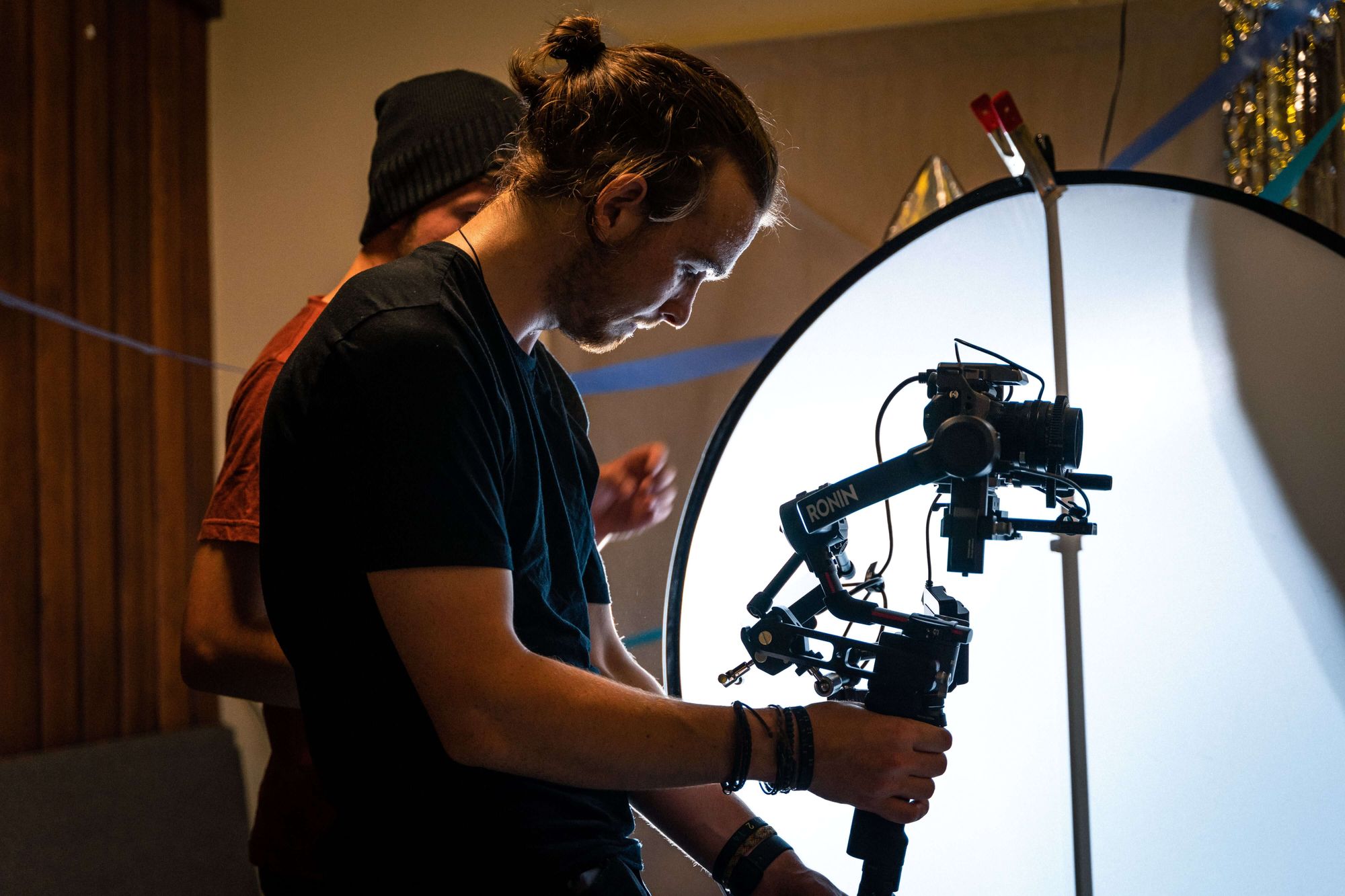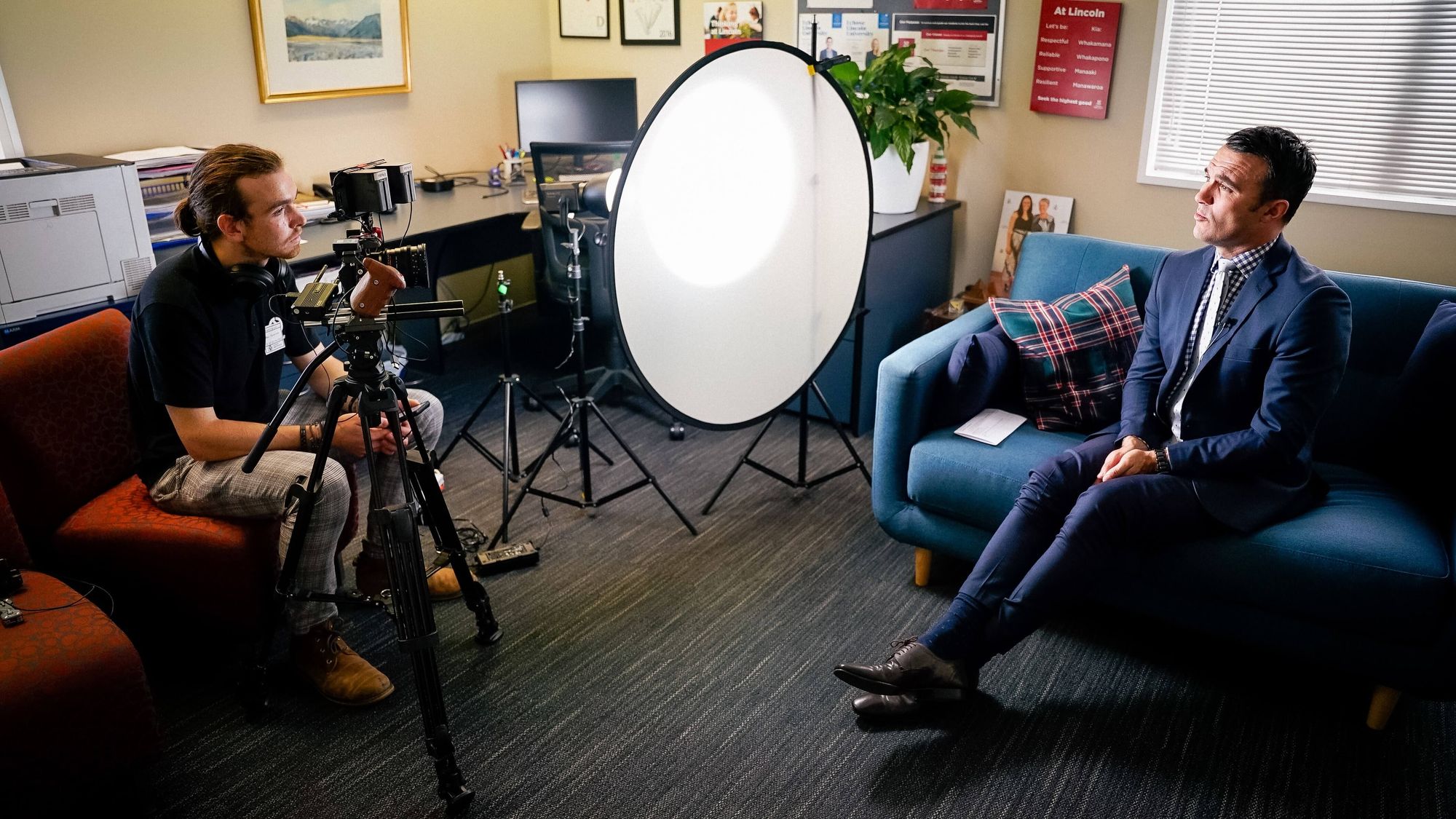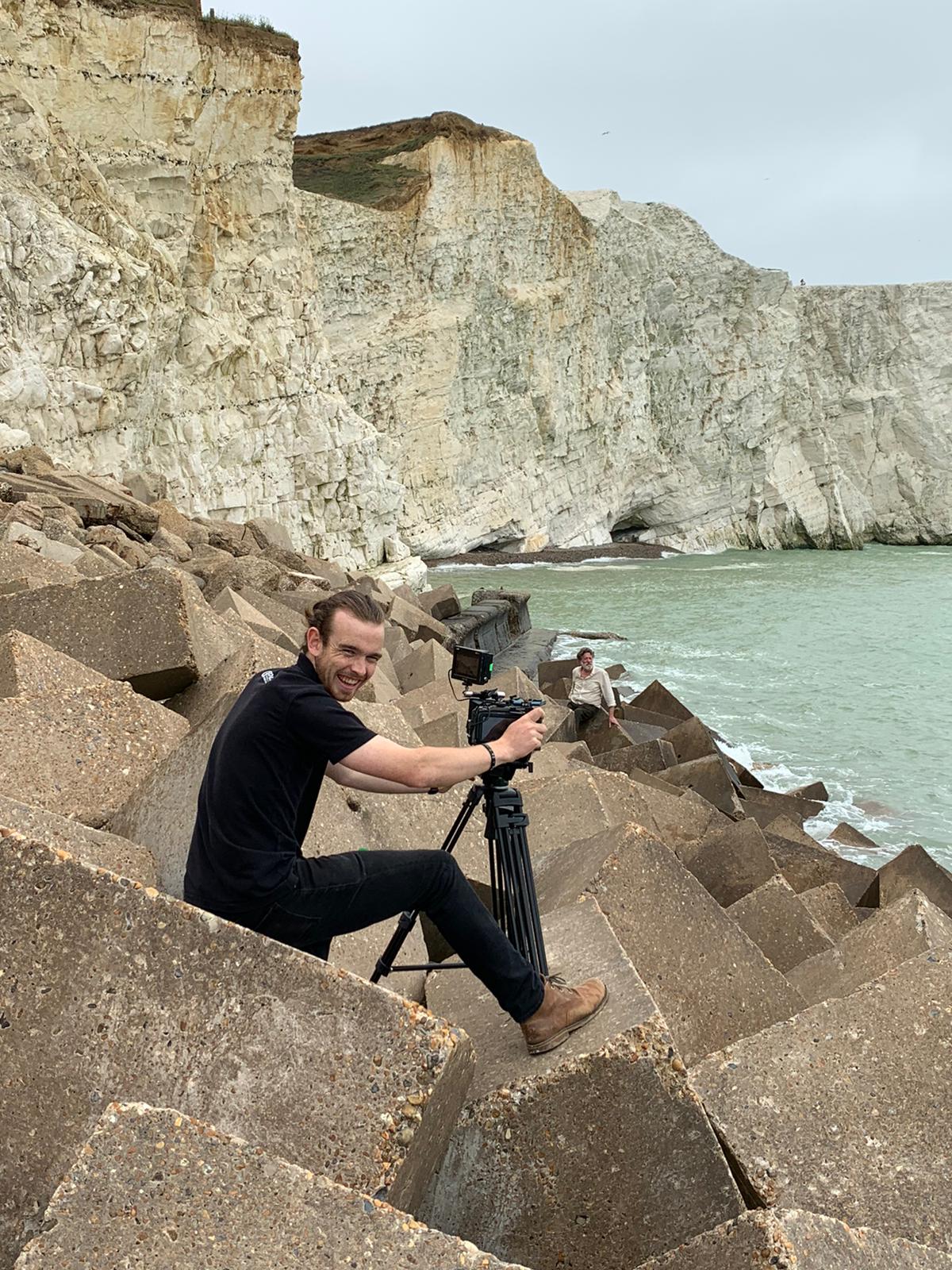Cinema Lighting 101: Learn with Max Paterson from Valley Films
Rent film gear from local filmmakers.

Rent film gear from local filmmakers.
Cinema Lighting:
Everything You Need to Know by Max Paterson
A collaboration with
Filmmaking 101: Ultimate Guide on Cinema Lighting by ValleyFilms
Ever heard lighting is the most crucial in every aspect of filmmaking? Chances are if you’re a filmmaker, you have! Learn the cinema lighting with Max Paterson.
Trailer
OPgF5ADW2ts
Intro
1
c1vqQdlRZ6Y
Theory of lighting
41
Face types
298
Light modifiers
393
Light tools
574
High-key light
915
Low-key light
996
Backlight
1087
Practical lights
1203
Lighting techniques
1366
3-point-lighting
1630
Location scouting
2112
Lighting setups
2281
Wrap up
3210
Meet Your Instructor
F6-KsK84nxc
What you’ll learn
Nailing the 3-point lighting: Key-, fill- and backlight.
Using negative fill: For creating an artificial shadow.
Contrasting the image: The main principles of light and shadow contrast.
Essential factors in film lighting: Accent, volume, and mood & atmosphere.
Reflecting light: Achieve cinematic lighting by diffusing light on a negative field.
Working with different light sources: On overpowering the sunlight with artificial light.
Masterclass Chapters
Want to become an expert in filmmaking? Before you even tap into cinematography, dive into the cinematic lighting. As many say, you can't create a film without proper lighting!
Theory of lighting
The theory of lighting starts with two things: fixtures and modifiers. LED is probably the most used lighting, especially if it's a low-budget environment. In a higher budget environment, we use Tungsten-lights, HMI lights, and Fluorescent lights.

Face types
The four main face types you will find on lights are the chip-on board, LED panels, and tubes. The chop-on board is the primary type of light you find in an LED. LED lights create an LED panel that goes through one or more diffusion layers and create one light source. The tubes also go through some diffusion source, which blends them all into one light source.
Light modifiers
Light modifiers are anything you put in front of your light fixture. Light modifiers improve the lighting in photos and videos. That can be anything from softboxes to honeycombs and barn doors.

Light tool
There are many light tools to use. Colour gel helps recolor the light you have in a scene. There are also scrims, which help bring down the level of light. Scrims are used for old-school lights. Diffusion, bounce, and negative fill are three useful light tools to learn.
High-key light
High-key lighting is a low-contrast lighting type with a low-lighting ratio. You will commonly find this in a comedy or a sitcom. Choosing the right tone for your lighting affects how people interpret the image.
Low-key light
The opposite of high-key lighting is low-key light, also referred to as upstage lighting. That is more cinematic, with a higher lighting ratio. Low-key lighting creates a much higher contrast between the fill and the key.
Backlight
The backlight comes in many forms as kickers, hair light, and edge light. Kickers are usually behind the subject, spilling through their shoulders and neck, giving them a dimension. Hair lights light up the rim around the hair, while edge light runs around the subject.

Practical lights
Practicals are any light fixtures which is inside the shot. You will find these as lamps, lights on the ceiling, or candles. Practicals can help ground and motivate where your light is coming.
Lighting techniques
Some lighting techniques often used in the film are from Italian painters. There is the Rembrandt technique, which uses a triangle section of light that hits the cheek of the face on one side.
Chiaroscuro lighting deals with brightness and darkness in the scene. It deals with contrast and shape when the light moves around.

3-point-lighting
3-point lighting is an often used term in film. It refers to the number of sources in the scene. A scene has a key light, a fill light, and a backlight. In this chapter, Max is telling you about 3-point lighting in detail.
Location scouting
Location scouting is an important technique that prepares you for what to expect when you are on the shoot. Max's advice is to spend time on location scouting for reasons. He tells you all the reasons in this chapter.
Lighting setups
In this chapter, Max will walk you through a lighting setup for a movie, putting the theory into practice. You will see scenes of a film and blueprints for the lighting to reach the perfect cinematic look.
About Your Instructor

Max Paterson
DOP
London, United Kingdom
“Lighting is about telling a story. Telling the audience what to look at and what not to look at, what has importance and what doesn’t have importance in the shot.”
Max Paterson is a New-Zealander DOP based in London and a founder of Valley Films.
Valley Films crafts impactful videos with stories, in a world of evolving formats and trends, with a story that lasts!
They craft stunning visuals and powerful stories for commercial and narrative films. And have worked with brands like Warner Bros, BBC, and more!
Want to learn more about cinematic lighting? Head over to our article about understanding Cinematography Lighting.






















